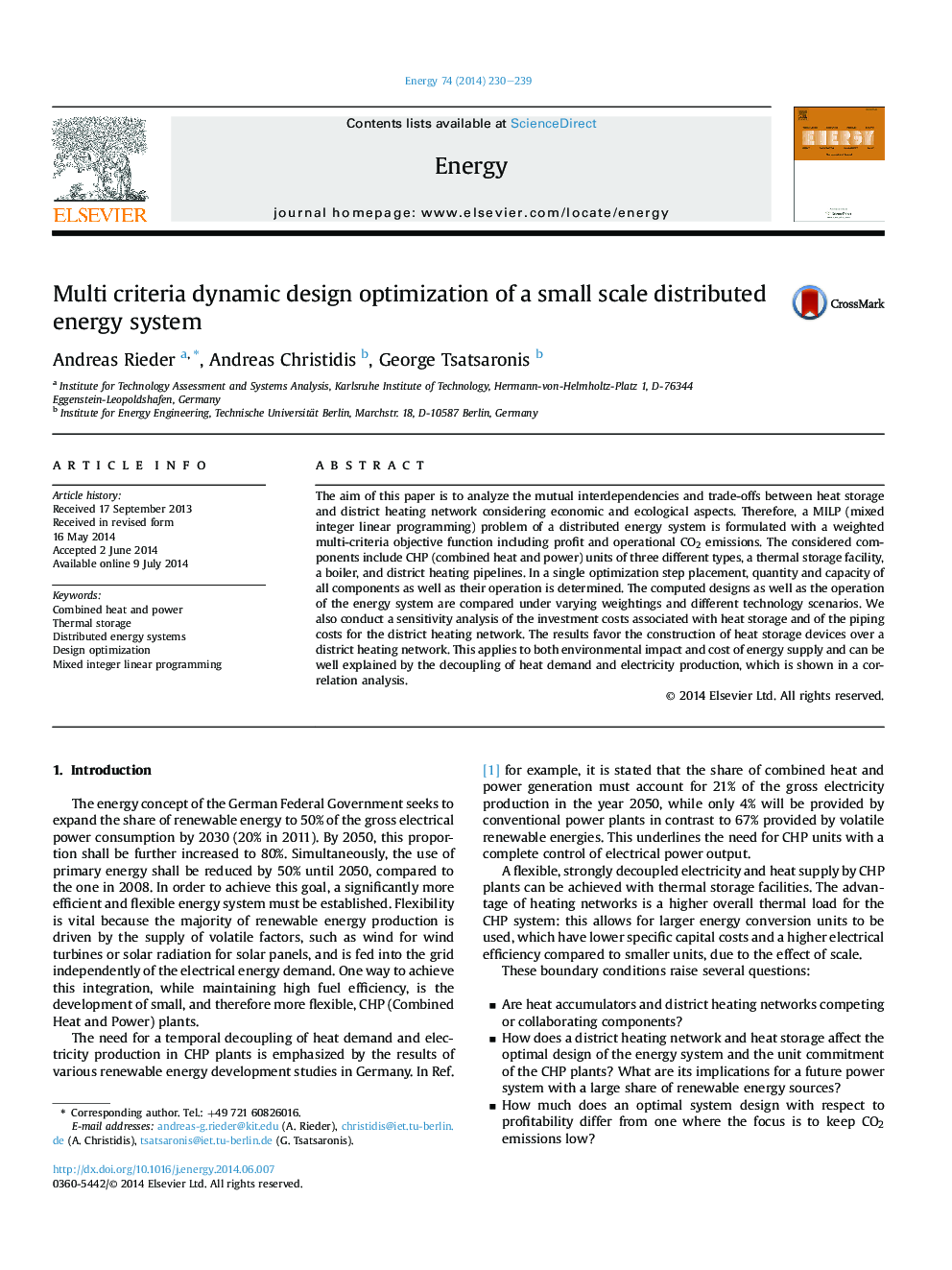| Article ID | Journal | Published Year | Pages | File Type |
|---|---|---|---|---|
| 1732456 | Energy | 2014 | 10 Pages |
•Paper is unique due to the combination of the following aspects.•Multi-criteria optimization considering costs and CO2 emissions of a distributed energy system.•Optimization of the capacity and operation of CHP units, boiler, heat storages, district heating.•Consideration of one year with 4 h intervals, since sizing depends on the interplay of all components.•Thermal storages enable a unit commitment according to time-varying electricity prices.
The aim of this paper is to analyze the mutual interdependencies and trade-offs between heat storage and district heating network considering economic and ecological aspects. Therefore, a MILP (mixed integer linear programming) problem of a distributed energy system is formulated with a weighted multi-criteria objective function including profit and operational CO2 emissions. The considered components include CHP (combined heat and power) units of three different types, a thermal storage facility, a boiler, and district heating pipelines. In a single optimization step placement, quantity and capacity of all components as well as their operation is determined. The computed designs as well as the operation of the energy system are compared under varying weightings and different technology scenarios. We also conduct a sensitivity analysis of the investment costs associated with heat storage and of the piping costs for the district heating network. The results favor the construction of heat storage devices over a district heating network. This applies to both environmental impact and cost of energy supply and can be well explained by the decoupling of heat demand and electricity production, which is shown in a correlation analysis.
